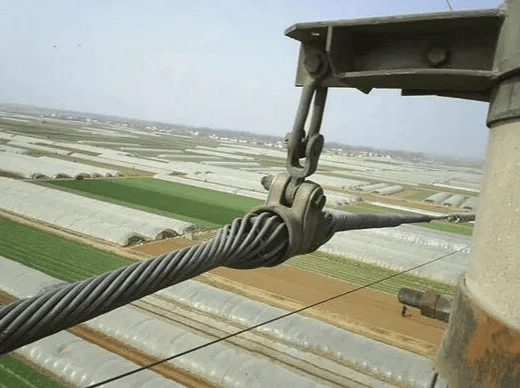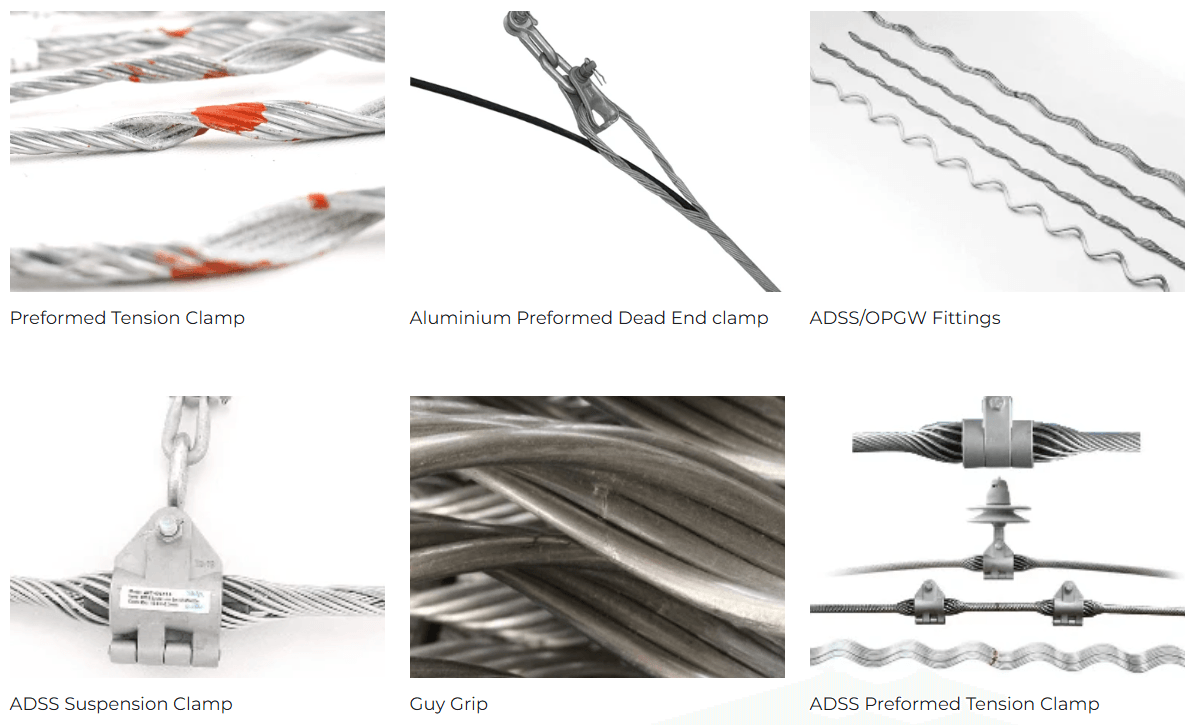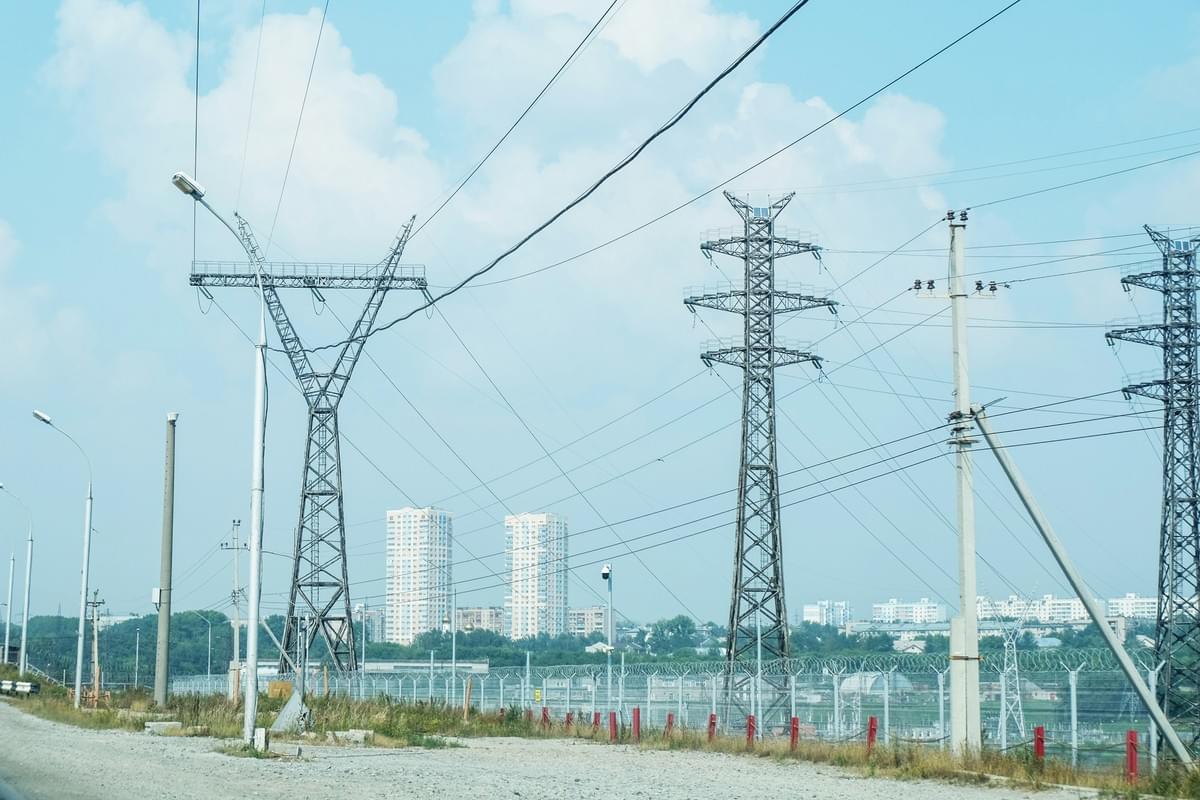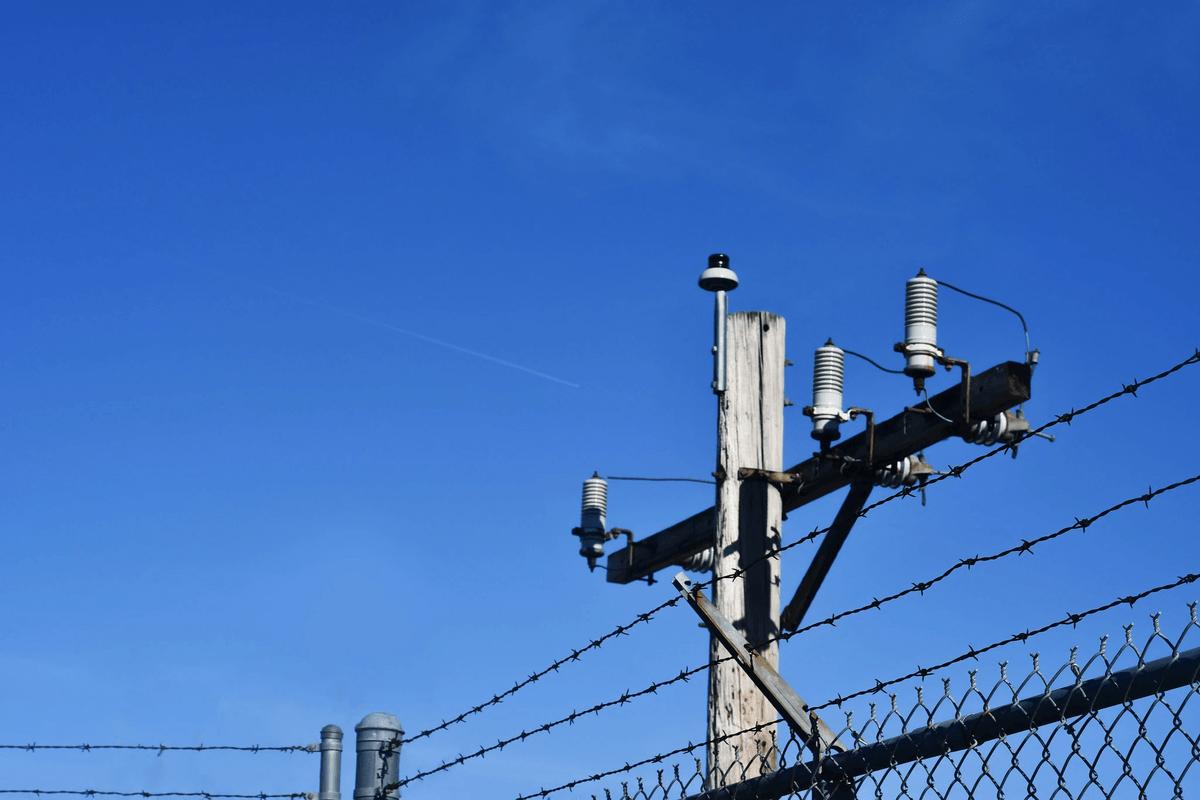Introduction

In the world of utility infrastructure, understanding the components that keep everything running smoothly is essential. Among these, cable suspension clamps play a pivotal role in ensuring that power lines remain secure and functional. But what exactly is a utility pole clamp, and how does it fit into the broader spectrum of utility pole hardware?
Understanding Cable Suspension Clamps
Cable suspension clamps are specialized devices designed to hold overhead cables securely in place on utility poles. These clamps not only support the weight of electrical lines but also allow for proper tensioning, which is crucial for maintaining system integrity. So, what is a pole clamp used for? Primarily, it's utilized to prevent sagging and ensure that cables remain stable during adverse weather conditions.
Significance of Utility Pole Hardware
Utility pole hardware encompasses a variety of components that work together to create a reliable electrical distribution system. From the sturdy poles themselves to various fittings and accessories like cable clamps and guy wires, each piece plays an integral role in safety and efficiency. The importance of having high-quality equipment cannot be overstated; it directly impacts service reliability and maintenance costs.
Spark Fittings and Its Role in the Industry
Their products not only meet regulatory standards but also offer innovative solutions tailored to industry needs. By choosing Spark Fittings as your supplier, you ensure that your projects are equipped with durable components designed for longevity—essential when considering factors like what is a utility pole tag or what is a utility pole called?
What is a Utility Pole Clamp?

Utility pole clamps are essential components in the electrical infrastructure, designed to secure and support various utility lines on poles. These clamps ensure that cables remain stable and properly positioned, which is crucial for the safe operation of electrical systems. Without reliable utility pole clamps, the integrity of power distribution would be compromised, leading to potential outages or hazards.
Definition and Purpose
A utility pole clamp is a mechanical device used to attach cables securely to utility poles. Its primary purpose is to hold wires in place, preventing them from sagging or getting damaged due to environmental factors such as wind or ice accumulation. Essentially, these clamps play a vital role in maintaining the overall safety and functionality of electrical networks.
Types of Utility Pole Clamps
There are several types of utility pole clamps available on the market today, each designed for specific applications and cable types. Common varieties include suspension clamps for overhead lines, strain clamps for tensioned cables, and dead-end clamps used at cable terminations. Choosing the right type from a reputable pole clamp supplier ensures that your installation meets safety standards while optimizing performance.
Applications in Electrical Infrastructure
Utility pole clamps have numerous applications within electrical infrastructure that go beyond mere cable attachment. They are employed in power distribution systems, telecommunications setups, and even renewable energy projects like wind farms and solar installations. By securing cables effectively with utility pole clamps, utilities can enhance reliability while minimizing maintenance costs associated with line failures or disruptions.
Importance of a Reliable Pole Clamp Supplier

A dependable supplier ensures that you receive high-quality components designed for durability and safety, which are crucial in maintaining electrical infrastructure. Without the right pole clamp, you risk compromising the integrity of your installations, leading to potential hazards and costly repairs.
Factors to Consider When Choosing a Supplier
Choosing the right pole clamp supplier involves several key factors that can significantly impact your projects. Firstly, assess their reputation in the industry; suppliers with positive reviews and testimonials often indicate reliability and quality service. Additionally, consider their range of products—do they offer various types of utility pole clamps suited for different applications? Lastly, evaluate their customer support; a responsive team can make all the difference when you need assistance or have questions about what is a pole clamp used for?
Benefits of Sourcing from Spark Fittings
Sourcing utility pole clamps from Spark Fittings comes with numerous advantages that set them apart from other suppliers. They specialize in providing high-quality hardware tailored specifically for utility applications, ensuring that every product meets rigorous safety standards. Moreover, their extensive knowledge means they can guide clients on best practices and answer queries like what is a utility pole tag? This level of support enhances your confidence in using their products.
Ensuring Quality and Safety
Quality and safety are paramount when dealing with any utility hardware, including utility pole clamps. By partnering with a reliable supplier like Spark Fittings, you ensure that all components undergo stringent testing before reaching your hands. This commitment to quality not only protects your investments but also guarantees compliance with regulatory requirements related to what is a utility pole called? Moreover, understanding how these components interact—such as how they work alongside utility pole guy wires—can further enhance overall system stability.
What is a Utility Pole Tag?

Utility pole tags are essential tools in the management and maintenance of utility infrastructure. They serve as identification markers that convey important information about the utility pole, including its specifications, maintenance history, and ownership details. Understanding what a utility pole tag is and its various uses can greatly enhance operational efficiency within utility management.
Definition and Uses
A utility pole tag is a small but significant label attached to a utility pole, typically made from durable materials that withstand environmental conditions. These tags often include barcodes or QR codes for easy scanning, which provides quick access to detailed information about the pole's specifications and maintenance records. In addition to identification, what is a utility pole tag used for? It also aids in tracking inspections, repairs, and compliance with safety standards.
Importance in Utility Management
In the realm of utility management, having accurate information at your fingertips is crucial. Utility pole tags play an integral role in ensuring that technicians can quickly identify poles requiring attention or replacement, thereby minimizing downtime and enhancing safety measures across electrical infrastructure. When considering what is a utility pole called? Remember that it’s not just about the structure itself; understanding its history through these tags enables better decision-making for maintenance schedules and upgrades.
Regulatory Requirements
Utility companies are often bound by regulatory requirements regarding record-keeping and safety compliance; this is where utility pole tags come into play again. These tags help ensure that all necessary data about each pole is documented accurately to meet local regulations governing electrical infrastructure safety standards. Moreover, understanding what is a utility pole guy wire’s role in stabilizing poles further emphasizes how essential it is to maintain comprehensive records through proper tagging systems.
What is a Utility Pole Called?

Utility poles are the unsung heroes of our electrical infrastructure, standing tall and proud to support the myriad of cables and equipment that keep our homes powered. Often referred to as poles in casual conversation, these structures have specific terminology associated with them that professionals in the field use regularly. Understanding what a utility pole is called and its various components can provide valuable insight into their functionality and importance.
Terminology Used in the Industry
In the utility industry, terminology can sometimes feel like a foreign language, but it’s crucial for effective communication. The term utility pole itself encompasses various types of poles used for transmitting electricity, telephone lines, or other communication mediums. Additionally, you might hear terms like distribution pole, which refers specifically to poles that carry lower voltage lines closer to consumers, or transmission pole, which supports high-voltage power lines over long distances.
Another important term is utility pole clamp, which refers to hardware used to secure cables and other attachments to the pole itself. Understanding these terms helps clarify discussions about maintenance or installation practices while ensuring everyone involved speaks the same lingo—whether you're chatting with a utility worker or discussing projects with your trusted pole clamp supplier.
Different Types of Utility Poles
When it comes to different types of utility poles, variety is the spice of life! The most common materials used include wood, steel, concrete, and fiberglass—each offering unique advantages depending on their application. Wooden poles are often favored for their cost-effectiveness and ease of installation; however, steel and concrete poles tend to be more durable and resistant to weather extremes.
Moreover, there are specialized poles designed for specific environments or purposes; for instance, transmission poles are taller and sturdier than distribution ones due to the high voltage they carry over long distances. Knowing what type of utility pole is needed for a project can help ensure safety and reliability—after all, no one wants a faulty utility pole clamp causing havoc!
Components of a Utility Pole
A utility pole isn’t just a simple stick stuck in the ground; it’s an intricate assembly designed for stability and functionality! Key components include crossarms (which hold wires), insulators (that prevent electrical leakage), brackets (for attaching equipment), and yes—utility pole clamps that secure cables tightly against the structure.
Each component plays an essential role in maintaining service integrity while ensuring safety standards are met throughout its lifespan. Additionally, understanding how these parts work together can help when considering what is a utility pole tag; these tags often provide essential information about inspections or maintenance schedules related to these components.
Understanding Utility Pole Guy Wires

Utility pole guy wires are essential components in maintaining the stability and safety of utility poles, which support electrical infrastructure. These wires serve as tensioned cables that anchor the poles to the ground or other structures, preventing them from swaying or collapsing under various environmental pressures. Understanding their definition and functionality is crucial for anyone involved in utility management or installation.
Definition and Functionality
A utility pole guy wire is a strong cable made from materials such as steel or synthetic fibers, designed to provide lateral support to utility poles. By anchoring the pole at an angle, these wires counteract forces such as wind and ice that could otherwise topple the structure. Essentially, they ensure that the utility pole remains upright and stable, contributing significantly to overall system reliability.
Installation Best Practices
When it comes to installing guy wires for utility poles, several best practices should be followed to ensure optimal performance and safety. First and foremost, it's vital to select high-quality materials from a reputable pole clamp supplier; this guarantees durability under stress conditions. Additionally, proper tensioning of the guy wires during installation is crucial; too loose can lead to instability while too tight may cause undue stress on both the wire and pole.
Regular inspections should also be part of maintenance routines—checking for signs of wear or corrosion ensures that any potential issues are addressed before they escalate into serious problems. Furthermore, understanding what a utility pole tag entails can aid in tracking maintenance schedules effectively.
Impact on Pole Stability
The impact of properly installed utility pole guy wires on pole stability cannot be overstated; these cables play a pivotal role in preventing structural failures that could lead to power outages or accidents. Without sufficient support from guy wires, even well-constructed poles may lean or fall over time due to environmental stresses like heavy winds or ice accumulation. Therefore, knowing what a utility pole is called within industry terminology helps professionals communicate effectively about these critical components.
In summary, understanding how utility pole guy wires function enhances one's ability to maintain safe electrical infrastructures while ensuring compliance with regulatory requirements related to installations and inspections. As we look towards future advancements in infrastructure technology, reliable solutions like high-quality clamps will continue being essential for effective installations.
Conclusion

In wrapping up our exploration of utility pole hardware, it's clear that cable suspension clamps play a pivotal role in maintaining the integrity of electrical infrastructure. Understanding what a utility pole clamp is and its various applications can greatly enhance our appreciation for these essential components. Moreover, recognizing the importance of reliable suppliers ensures that these critical tools meet safety and quality standards, ultimately benefiting the entire industry.
Key Takeaways on Cable Suspension Clamps
Cable suspension clamps are crucial for securing cables to utility poles, ensuring they remain intact under varying environmental conditions. The diversity in types means there's a specific solution for every application, whether it's residential or industrial. When considering what is a pole clamp used for?, remember it’s not just about holding cables; it’s about providing stability and safety throughout the electrical grid.
The Role of Reliable Suppliers in the Industry
Choosing the right pole clamp supplier can make all the difference in terms of product quality and reliability. A reputable supplier not only provides high-quality products but also offers insights into best practices and compliance with industry standards. This is especially important when you think about what is a utility pole tag? These tags often indicate maintenance schedules and compliance, making trustworthy suppliers indispensable in maintaining operational efficiency.
Future Trends in Utility Pole Hardware
Looking ahead, we can anticipate innovations that will further enhance the functionality of utility poles and their accessories like utility pole guy wires and clamps. Advances in materials technology may lead to lighter yet stronger components that reduce installation time while increasing durability against weather challenges. As we explore what is a utility pole called?—the terminology will likely evolve alongside these advancements, reflecting new technologies that improve energy distribution systems.

